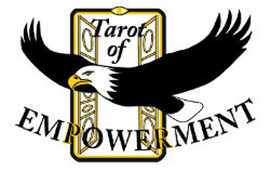What does it mean that the veil between the worlds is most thin at this time of the year? Old religions from Europe, and independently from Mexico and Central America, invite and celebrate the dead to return to feast and be remembered at the time after the last harvest.
Pagan holidays are based on the stars and the seasons. Two of the most important celebrations are Samhain and Beltane. Samhain (pronounced Sow-in) celebrates the final harvest and the time to enter darkness, which is the beginning of the new year. These pagans believed that during Samhain the veil between the worlds of the living and dead was thin and that they could communicate with the those who had crossed over. (Beltane is the movement back to the light and will be discussed in a later newsletter.)
Even today Pagans celebrate Samhain and may bring out mementos of the dead, prepare their favorite food, and light candles or bonfires to show the departed the way home. There is a belief that death is not to be feared because the person lives on in another dimension. In ancient times there was often a parade with costumes on behalf of the gods and goddesses of the underworld. Some would wear masks to hide from spirits that may be malevolent. Because it was the new year, it was also a time to plan for the future.
The Day of the Dead came from traditions of the Aztecs, Maya, and Toltec to celebrate the memories of their dead. The belief among these people is that the death does not end life, but new life comes from death, just as the new crops come the old soil. Like Samhain, the Day of the Dead comes at the end of harvest going into the winter.
The Day of the Dead is celebrated with music and dancing. A temporary altar is set us to honor the dead. Along with photos and mementos, there are offerings of the four elements to help the departed on their journey. Water is placed nearby to quench their thirst. Wind is represented by wind spinners, tissue paper, or chimes. Earth is represented by food, such as bread. Candles, often in the form of a cross, represent fire. Brightly decorated skulls, flowers, and costumes represent the celebratory cycle of life. Monarch butterflies arrive in Mexico on November 1 and are often thought to hold the spirit of the dead.
In 601 A.D. Pope Gregory the First realized that people from the old traditions would not give up their celebrations and spiritual beliefs, so the church’s holy days were chosen to correspond to symbols of native spiritual holidays. In the 7th century Pope Boniface IV declared All Saints Day and the evening before was hallowed, or holy, eve. Thus, October 31 became Halloween, and the end of harvest celebration was set to a specific date rather than the ambiguous time of the end of the harvest.
And that’s why we celebrate Halloween on October 31 and Day of the Dead on November 1.

